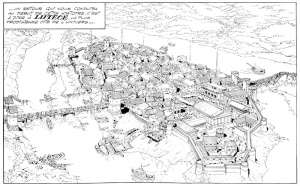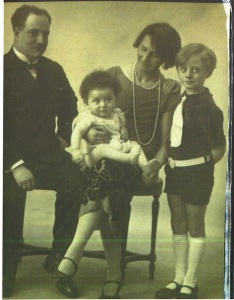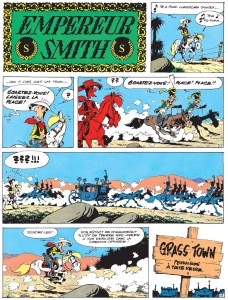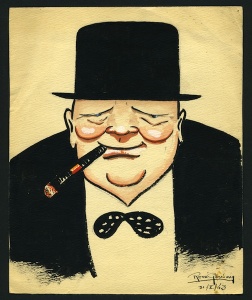Astérix in Britain
by Jewish Museum London
The city of Lutetia (Lutèce), from Astérix and the Laurel Wreath, 1972 © 2018 Les Éditions Albert René/Goscinny-Uderzo

A frame from Dalton City (a Lucky Luke adventure) by Goscinny and Morris, 1969 © Dargaud Éditeur Paris/Lucky Comics

In this early adaptation for English audiences, Astérix and Obélix are transformed into Little Fred and Big Ed. Valiant comic, 1964. The first official English translation of Astérix was published in 1969. © 2018 Les Éditions Albert René/Goscinny-Uderzo

(Clockwise from left) Stanislas, Anna, Claude and René Goscinny, 1927 © Anne Goscinny/L’Institut René Goscinny
 Jewish Museum London presents a major retrospective exhibition on the life and work of René Goscinny (1926–1977), the ingenious writer of beloved comics such as Astérix and Lucky Luke, an artist who revolutionised the genre and dissolved the divide between learned and popular culture.
Jewish Museum London presents a major retrospective exhibition on the life and work of René Goscinny (1926–1977), the ingenious writer of beloved comics such as Astérix and Lucky Luke, an artist who revolutionised the genre and dissolved the divide between learned and popular culture.
Over 100 items gathered from around the world are displayed together for the first time in the UK, including original artworks, scripts and storyboards as well as Goscinny’s own tools, sketchbooks and family photographs.
click on any image to enlarge
and view in slideshow
Born in Paris in 1926, Goscinny was a child of Jewish emigrants from Poland and Ukraine. He spent his childhood in Argentina, before moving to New York as a young man. It was following his return to Europe that Goscinny founded the Franco-Belgian comics magazine Pilote and launched his career as a cartoonist.
In 1959, in the first issue of Pilote, Goscinny, with Albert Uderzo, released his most famous creation, Astérix, which follows the adventures of a village of indomitable Gauls as they resist Roman occupation in the year 50 BC. The series was an instant hit with readers and remains one of the world’s most popular comic creations.
Goscinny’s books have sold 500 million copies worldwide, and his work has been translated into 150 languages, with 100 film adaptations. Yet despite the impressive figures of Goscinny’s success, the story of the man himself and the scale of his work have been underexplored until now.
Organised chronologically and thematically, Astérix in Britain illustrates the course of Goscinny’s life and career as an illustrator and writer, and explores some of his most important artistic collaborations with cartoonists like Albert Uderzo, Maurice De Bevere (‘Morris’), Jean-Jacques Sempé and Jean Tabary. Highlights include Goscinny’s typewriter, his wartime illustrations of Stalin and Churchill, and extremely rare original Astérix artworks by Goscinny and Uderzo.
The playful and dynamic exhibition includes a number of interactive elements for families and younger visitors to enjoy, including immersive sets based on the worlds of Goscinny’s most popular comics, dressing-up stations, larger-than-life characters and creations, games and cosy areas for storytelling and reading, and is accompanied by a series of talks and events.
Astérix in Britain: The Life and Work of René Goscinny is adapted from the exhibition originally produced by the Museum of Jewish Art and History in Paris in partnership with L’Institut René Goscinny.
Astérix in Britain: The Life and Work of René Goscinny
10 May to 30 September 2018
The Jewish Museum London
Raymond Burton House, 129–131 Albert St, London NW1 7NB
Daily 10 am to 5 pm (Fridays 2 pm)
£8.50/£6.50 concessions/£4 5–16s
jewishmuseum.org.uk
@jewishmuseumLDN





